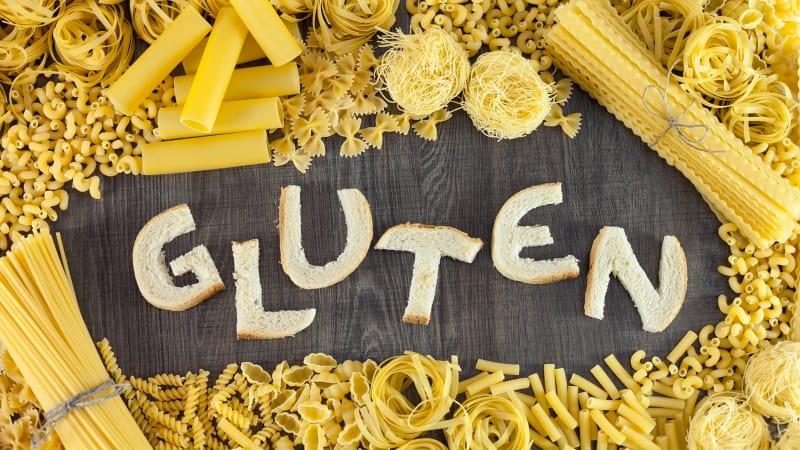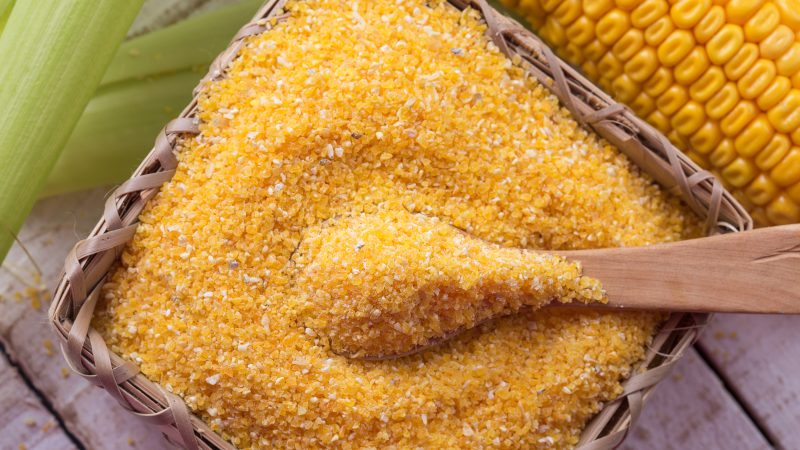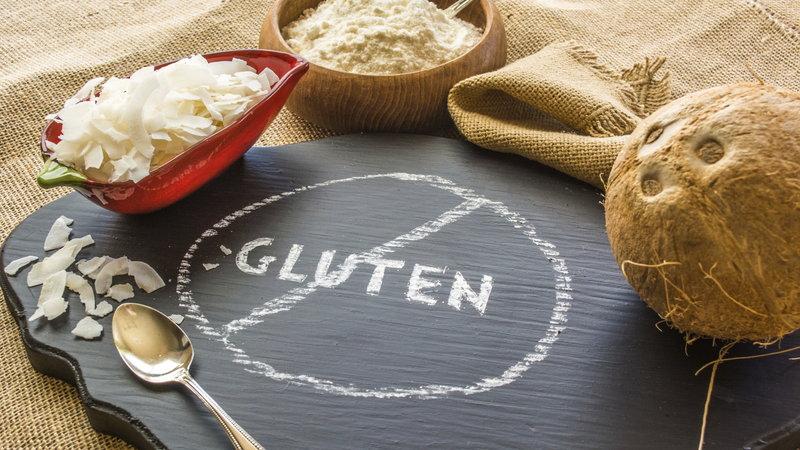Does corn contain gluten, is it found in corn grits and flour, and why is it so dangerous?
Corn is a delicious delicacy, in any form. Children love corn porridge, canned corn has long become an integral ingredient in many salads and other dishes, and corn flour adds an unusual taste to baked goods. But what if you or someone you love is gluten intolerant? After all, it is found in many cereal crops. Let's figure out whether corn contains gluten and what it is.
What is gluten
Gluten is not one substance, as is usually believed, but two groups of proteins (gliadin and gluten). Gluten is also called gluten in another way. It nourishes the embryos of cereal plants and helps them germinate. After harvesting, it does not disappear anywhere, but is stored in the plant.
Knowing the origin of this word in Russian, you can accurately understand its essence. Translated from Latin, gluten means “glue.” These proteins give elasticity and ductility to the dough, maintaining the shape of products made from it. Quite often, gluten is used in the production of ice cream, candy, bagged soups, beer, French fries, ketchup and other sauces.

Why is it harmful?
To understand the negative qualities of gluten, let’s consider the mechanism of its passage through the human body.
Gluten enters the human body with food and passes to the small intestine. This is where the unpleasant moments begin. Protein provokes atrophy of the absorptive villi in the walls of the small intestine.This makes it difficult for the intestines to perform their functions.
The human immune system reacts to gluten as if it were a virus or harmful bacteria and begins to produce antibodies directed against these proteins. And the protein gliadin is similar in structure to nerve cells, heart cells, cells of the thyroid and pancreatic glands. As a result, antibodies begin to destroy these cells too.
In this case, problems with the intestines may begin: flatulence, diarrhea, constipation, allergic reactions and, in extreme cases, leaky intestinal syndrome. In this case, serious diseases of other organs and the circulatory system as a whole are threatened.
And due to the reaction of the immune system, multiple sclerosis, type 1 diabetes and Hashimoto's goiter generally develop.
But mostly such reactions occur in people with celiac disease - gluten intolerance (an autoimmune disease). It is their body that begins the urgent production of antibodies aimed at destroying the complex protein.
Attention! Doctors recommend that healthy people gradually reduce their consumption of gluten-containing foods as they age, but do not give them up completely.
Substance content in corn
Now we come to the most important question: does corn flour and cereal contain gluten? Corn is a gluten-free product. Cereals and flour also do not contain it, since the vegetable itself does not contain gluten.

Composition of corn
100 grams of corn contains 60 g of carbohydrates, 10.3 g of protein, 9.6 g of fiber. The energy value of the product is 44.1 kcal per 100 grams.
As for corn grits, its calorie content is naturally higher - 328 kcal. Of the useful substances, it contains chromium, cobalt, manganese, copper, molybdenum, phosphorus, magnesium and potassium.It also contains enough vitamins: A, B1-B6, B9, PP, E, H (biotin).
Other gluten-free grains
Corn is not the only grain that is gluten-free. These also include buckwheat, rice and millet. They can be safely consumed by people with celiac disease, as well as those prone to allergies.
Buckwheat is the most useful. It contains the largest amount of essential acids (8, as in oatmeal).
Unpopular grains include sorghum, chumiz and sago. Chumiza is black rice. Produced in the form of cereals and flour. Sago is made from the pith of the sago tree (palm) and corn starch. Sorghum can be found in three forms: flour, starch and grits.
It is also worth noting such pseudo-cereals as quinoa. Recently, it has become increasingly popular among adherents of proper nutrition. It is added to various dishes (yogurt, soups, salads), cooked porridge, and made into flour. Pasta, bread and other products made from quinoa flour are commercially available.
Read also:
What kind of corn is needed for popcorn: choose the appropriate variety.
Rating of the 15 best varieties of low-growing tomatoes for greenhouses.
We study the problem thoroughly: garlic turns yellow in the spring - what to do.
What does “Product contains traces of gluten” mean?
Similar phrases are often found on various store products. We see the same inscriptions regarding peanuts and lactose. This is because these are strong allergens.
The phrase “Product contains traces of gluten” means that they contain a trace amount of this protein. Not critical, but posing a possible danger for people with intolerance.
Unfortunately, the absence of such an inscription does not guarantee the complete absence of gluten in the product. Therefore, you need to be very careful with new products.
Pros and cons of a gluten-free diet
This diet is a salvation for people with celiac disease. It is also used for weight loss and relief of certain diseases: diabetes, asthma, schizophrenia, Parkinson's disease, atherosclerosis, psoriasis, migraines, autism.
The diet consists of avoiding foods containing gluten.

Authorized products:
- corn, buckwheat, rice, millet;
- meat and fish;
- eggs;
- vegetable oils;
- fresh fruits;
- vegetables (fresh, boiled, steamed or baked);
- potato;
- fresh berries;
- legumes (peas, beans, lentils);
- nuts;
- natural cottage cheese;
- dairy and fermented milk products with a short shelf life;
- quality tea, gluten-free coffee.
You should avoid beer, kvass, canned food, any fast food, pasta and baked goods, industrial sauces, chips, ice cream and yogurt with a long shelf life, blue cheese, tea bags, and instant coffee. This also includes grains not listed above in the gluten-free list.
Corn and fruits will help cope with the lack of sweets. Corn really has a very rich and unique taste that can “deceive” the body. You can take the cob apart into grains and eat them like little candies.
Pros of the diet:
- Cleansing the body of toxins.
- Rapid weight loss.
- Skin improvement.
- Feeling of lightness and energy.
- A wide list of permitted products and a large number of cooking variations.
- There is no strict control over portion sizes.
Minuses:
- It is very difficult for those with a sweet tooth to completely give up flour products, cakes, etc. But this is only at the beginning. Fruits are a great way to help you switch to proper nutrition.
- Constant control over the composition of products.
- Replenishment of fiber, iron and vitamin B is necessary.
Reference. Despite the harm of gluten, it also contains useful substances. When giving up this protein, it is very important to increase your consumption of foods high in these substances. The lack of iron is compensated for by apples and buckwheat, fiber - vegetables and fruits. B vitamins are found in large quantities in fish, eggs, legumes, nuts and spinach.
All other disadvantages are not so significant when your health is on the other side of the scale.
Real contraindications
Doctors recommend that everyone, without exception, reduce their consumption of gluten-containing foods. We can easily obtain the beneficial substances in this protein from other products.
Real contraindications to eating gluten:
- allergy;
- Gluten intolerance - celiac disease.
For other categories of people, the use of this substance is not so dangerous, if we talk about moderate doses.
Summarize
Corn is one of the few grains that does not contain gluten. This is a real delicacy that will also be a very useful assistant when following a gluten-free diet. In fact, this is not even a diet, but simply proper nutrition.
Canned food, fast food, beer, and a large number of flour products are dangerous not only because of the presence of this substance. Healthy people just need to give up these foods and eliminate excessive amounts of gluten consumed in order to get rid of minor ailments and improve their quality of life.
Corn contains gluten. Use it as an Organic Herbicide